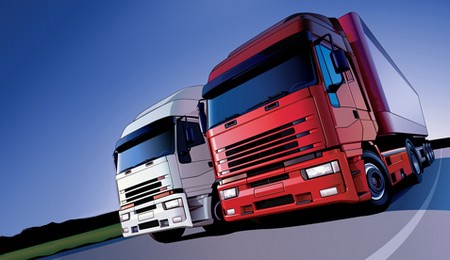
In the definitional sense, they belong to the technical means of transport logistics. In logistics, transporters are a standard part of every company's transport fleet alongside regular lorries. Transporters are frequently used both privately and commercially. With regard to the total weight of the vehicle, the range is between 3.5 and 7.5 tonnes, which is why the regular German B driving licence is no longer sufficient for driving such a vehicle. Specifically, a distinction is made between small and large transporters, with the former belonging to the passenger car category and the latter already in the light lorry category. Colloquially, however, the term only refers to road vehicles. Going from the basic meaning of the word, this category also includes ships, aircraft and railways. The Commission is currently analysing these notifications.A transporter is a motor vehicle that is used to transport goods. The following Member States have notified the Commission that they intend to use the derogation: Finland, Sweden, Denmark. Member States that wish to use the derogation have to notify the Commission of their intent and review the measure at least every 5 years. However, such derogation from Article 4 of Combined Transport Directive can only be applied where it is necessary to avoid misuse. Such numerical limitations may be slightly different from those applying to road-only transport as established in the Regulation. The Regulation (EU) 1055/2020 (part of Mobility Package 1) established a possibility for Member States to apply the cabotage quotas in Article 8 of Regulation (EU) 1072/2009 to road legs of international combined transport when those road legs do not cross a border. Derogation from Article 4 of Combined Transport Directive The contributions received in the public consultation are summarised in a report.īased on the study, a REFIT (Regularly Fitness and Performance Programme) evaluation of the Combined Transport Directive is currently being finalised, with the outcome that it continues to be a relevant tool, however efficiency and effectiveness could be improved. In 2014, a study on EU combined transport market and two stakeholder consultations concluded that support for combined transport is perceived as very important by stakeholders in order to be able to support modal shift. Furthermore, the EU is also providing financial support for projects relating to combined transport. The CT Directive is supported by other EU policies, such as the Weights and Dimensions Directive ( Directive (EU) 2015/719 amending Council Directive 96/53/EC) which provides for Member States to permit movement of heavier intermodal load units by road when used in Combined Transport operations. In order to be eligible for the provisions within the CT Directive, the movement of goods must meet a number of specific criteria as regards type of load units and distances. The Directive seeks to promote Combined Transport operations through the elimination of authorisation procedures and quantitative restrictions for Combined Transport operations, it clarifies the non-application of road cabotage restrictions on road legs, and provides financial support through fiscal incentives for certain Combined Transport operations. Ĭombined Transport is promoted within the European Union (EU) through the Combined Transport (CT) Directive ( Council Directive 92/106/EEC). The EU also provides financial support to multimodal/intermodal transport.

Direct support for intermodal transport, as provided by the Combined Transport Directive (Council Directive 92/106/EEC), which aims to increase the competitiveness of the combined transport (defined as intermodal transport with a strictly limited road leg).Better use of information (on traffic, capacities, availability of infrastructure, cargo and vehicle positioning).More targeted investments into physical infrastructure, aimed at better interconnections between the single modal networks.The social and environmental costs of transport should be paid in line with the polluter pays principle. The internalisation of external costs in all modes of transport, with a view to send appropriate pricing signals to users, operators and investors.The EU transport policy aims therefore at reducing road transport towards less polluting and more energy efficient modes of transport.įour types of actions support greater use of multimodal solutions.

Freight transport continues to grow and road freight transport, in particular, is projected to increase by around 40% by 2030 and by little over 80% by 2050.

The negative consequences of transport such as pollution, climate change, noise, congestion and accidents pose problems to the economy, health and well-being of European citizens.


 0 kommentar(er)
0 kommentar(er)
